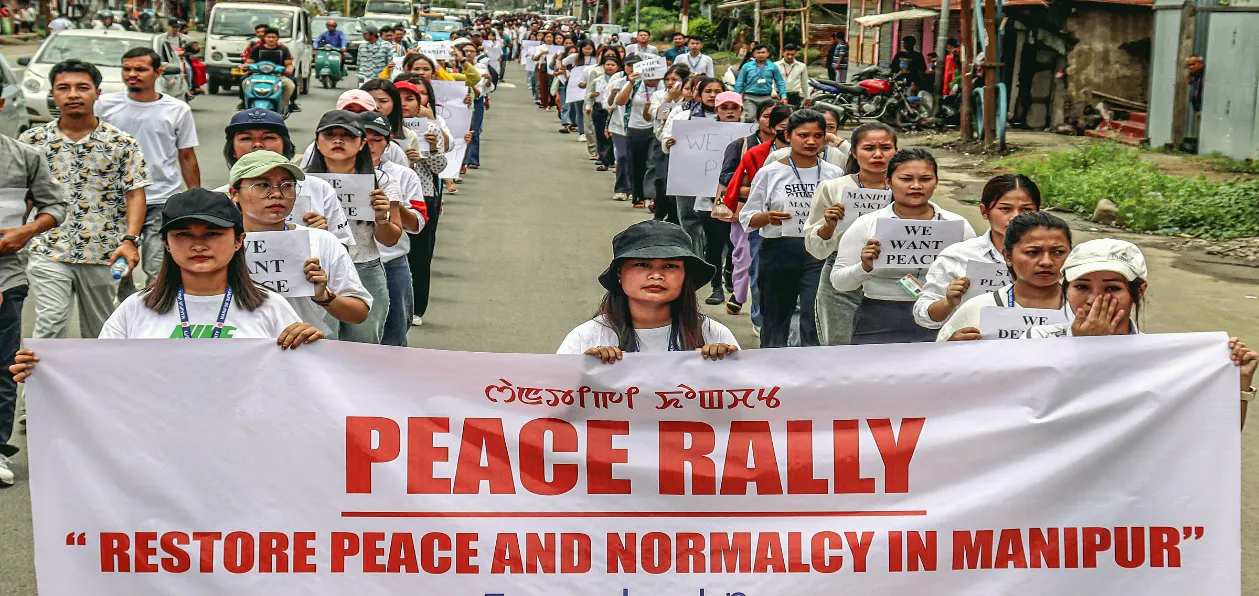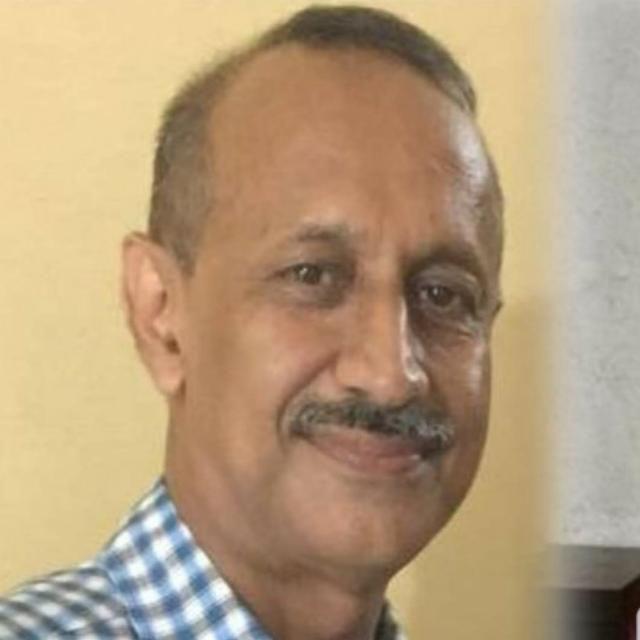
 Pallab Bhattacharyya
Pallab Bhattacharyya
On July 20 the celebrated writer of the Northeast Jaydeep Majumdar in his article “Kuki-Meitei divide is permanent now” in the Swarajya portal mentioned the following reasons for the failure of the Government and society to resolve the Kuki-Metei conflict and its present point of no return situation - Government inaction, Loss of trust between the communities, animosity, and violence, irrevocable population transfer, ineffectual law enforcement, etc.
The disgusting video of June 4 and it's making viral by a group with invested interests just before the Monsoon session of the Parliament was to begin, and the reaction by the Prime Minister and Indians in general, Chief Justice, and other national and international dignitaries has upstaged the situation to an international event.
The recent call by PAMRA (an organization of erstwhile insurgents of MNFs) directing Meiteis to leave Mizoram and a press release by Mizo Students Union on July 24, declaring its intent to conduct Meitei census at prominent educational institutions such as the Regional Institute of Paramedical and Nursing Sciences (RIPANS), National Institute of Technology (NIT), Institute of Chartered Financial Analysts of India (ICFAI) and Mizoram University of Mizoram have further complicated the situation.
It's important to approach such complex situations with nuance and empathy, acknowledging the challenges faced by all stakeholders. Delving into history and encouraging dialogue, addressing root causes of conflicts, and promoting inclusivity can be essential steps towards the resolution of such complex problems. Providing the Kukis a separate state or administrative unit, as suggested by many, cannot be a permanent solution. Assam is locked in border disputes with all its neighbours that were once part of the State, and this is an eloquent testimony to the idea of a separate unit for Kukis.
The origin of the Kuki people is not precisely documented in historical records. However, oral traditions and legends among the Kukis suggest that their ancestors might have originated from Tibet or southwestern China. Over time, these early Kuki groups migrated in different directions in search of better land for cultivation and grazing. One of the significant migratory routes of the Kuki people led them to the hills and valleys of present-day Manipur, Mizoram, Assam, and Nagaland. The migration was a gradual and phased process, spanning several centuries. Different Kuki clans followed various routes, leading to the formation of distinct Kuki tribes in the region. The Kukis started settling in Manipur around the 16th century and continued to do so in subsequent centuries. The region's hilly terrain and dense forests provided a suitable habitat for them. The Kukis adapted to the new environment, engaged in agriculture, and established their distinct social and cultural identities.
One of the most significant historical events involving the Kukis in Manipur was the Kuki Uprising, also known as the Kuki Rebellion or Kuki-Lushai Uprising. It happened in the late 1910s and early 1920s when the British colonial administration imposed taxes and restrictions on shifting cultivation, leading to widespread discontent among the Kukis. The uprising, which was a series of sporadic and coordinated attacks, resulted in significant casualties and led to the eventual pacification of the Kuki areas by the British. After India gained independence in 1947, Manipur became a part of the Indian Union. The Kuki people, like other indigenous groups in the region, have since struggled to preserve their cultural heritage, identity, and rights while adapting to the modern world. Today, the Kukis in Manipur continue to play a significant role in the state's social, political, and cultural life. They maintain their unique customs, languages, and traditional practices while also engaging in various modern professions and activities. The Kukis' journey to Manipur and their subsequent history exemplify the complexities and richness of the northeastern region's diverse cultural tapestry.
Both communities have a rich cultural heritage and have coexisted in the region for centuries. While there have been historical tensions and conflicts between various communities in Manipur, there are also instances of good relations and coexistence between the Kukis and Meiteis.
One way the Kukis and Meiteis come together is by celebrating each other's festivals. For example, Meiteis often take part in the Kut festival, celebrated by the Kukis, while Kukis join in the Meitei festivals like Yaoshang (Holi) and Lai Haraoba. Inter-community marriages are becoming more common, helping to strengthen the bond between the Kukis and Meiteis. Sports and entertainment events are another platform where communities mingle and foster goodwill. Both communities engage in various traditional sports and modern games together, promoting a spirit of healthy competition and camaraderie.
There are social and cultural organizations that aim to promote harmony and understanding between various communities in Manipur. These organizations often collaborate on projects and events that bring people together and celebrate their shared heritage.
Schools and colleges are spaces where young minds from different communities interact, fostering friendships and a sense of togetherness.
Many Kuki and Meitei communities engage in interfaith dialogues, promoting religious tolerance and understanding. These dialogues help to bridge differences and build common ground among diverse religious groups. These groups can play a great role in strengthening existing bonds between the two communities and eventual conflict resolution.
It's important to note that despite these instances of good relations, there have been historical instances of conflicts and disputes between the Kukis and Meiteis. However, focusing on positive examples and fostering dialogue and cooperation can contribute to a more harmonious society. These instances of mutual respect and cooperation can serve as models for other communities in Manipur and beyond to follow, fostering an environment of peaceful coexistence and celebration of diversity. It's essential to promote understanding, respect, and empathy to build a stronger and united society.
The Central Government needs to work closely with the state government, local authorities, and community leaders to understand the specific needs and concerns of the Kuki and Meitei communities in Manipur. By prioritizing inclusivity, respect for diversity, and equitable development, the Central Government can contribute significantly to fostering a healthy and harmonious relationship between these communities.
The State Government must unleash proactive efforts to improve the Kuki-Meitei relationship and promote understanding, reconciliation, and cooperation between the two communities.
Active participation of Civil Society groups from both the Kuki and the Metei communities is sine-qua-non for the successful implementation of all steps taken for reconciliation by the authorities. The political steps which the ruling party should take to improve its image and better implementation of these steps are left to the party.
ALSO READ: Why is India's Jewel in the crown, Manipur, burning?
There is no doubt that the steps for reconciliation to promote unity amidst diversity, may require a long time but for an all-encompassing permanent solution, this is the best way and world history is a reminder of this. People of Manipur should recognize migration as historical truth and have deep faith in the famous quote on migration: “You cannot go back and change the beginning, but you can start where you are and change the ending.”
(Pallab Bhattacharya is a veteran IPS officer who served as Director General of Police and Chairman of the Assam Public Service Commission)
